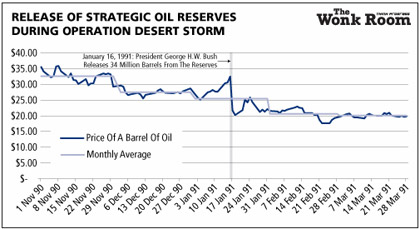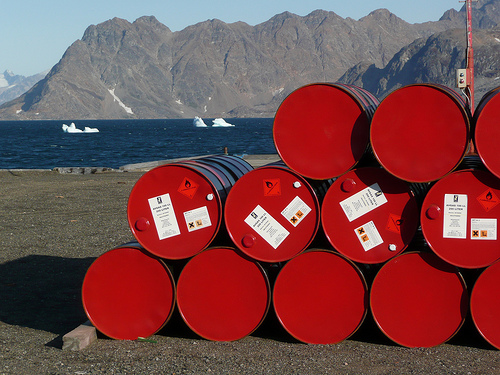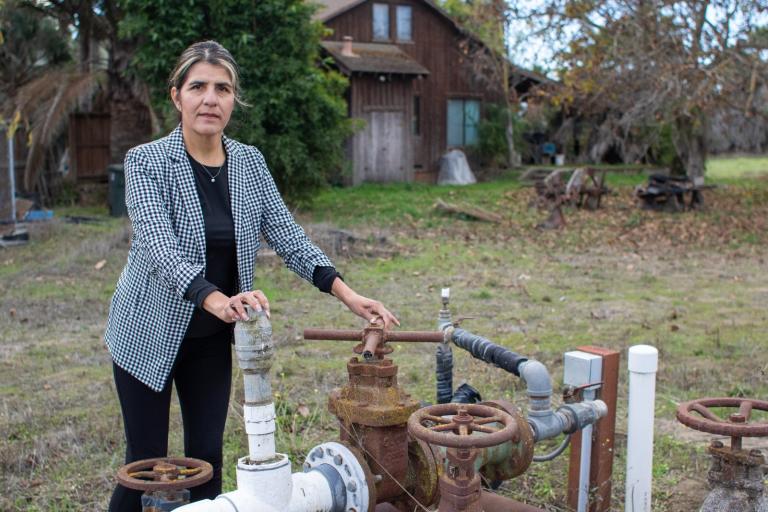The Department of Energy issued this news release today:
U.S. Energy Secretary Steven Chu announced today that the U.S. and its partners in the International Energy Agency have decided to release a total of 60 million barrels of oil onto the world market over the next 30 days to offset the disruption in the oil supply caused by unrest in the Middle East. As part of this effort, the U.S. will release 30 million barrels of oil from the Strategic Petroleum Reserve (SPR). The SPR is currently at a historically high level with 727 million barrels.
“We are taking this action in response to the ongoing loss of crude oil due to supply disruptions in Libya and other countries and their impact on the global economic recovery,” said Energy Secretary Steven Chu. “As we move forward, we will continue to monitor the situation and stand ready to take additional steps if necessary.”
The United States has been in close contact with oil producing and consuming countries about disruptions to the international oil market that could affect the global economy. The situation in Libya has caused a loss of roughly 1.5 million barrels of oil per day — particularly of light, sweet crude — from global markets. As the United States enters the months of July and August, when demand is typically highest, prices remain significantly higher than they were prior to the start of the unrest in Libya.
 Opening the Strategic Petroleum Reserve worked well when President George H. W. Bush did it during Desert Storm.I have recommended selling off the SPR for a long time.
Opening the Strategic Petroleum Reserve worked well when President George H. W. Bush did it during Desert Storm.I have recommended selling off the SPR for a long time.
From 1993 to 1995, I was special assistant for policy and planning to the deputy secretary of energy, who oversaw all of Department of Energy’s energy programs, including the SPR. I was invited in July 2008 to testify in front of the Select Committee on Energy Independence and Global Warming hearing, “Immediate Relief from High Oil Prices: Deploying the Strategic Petroleum Reserve.”
My full 2008 statement (plus “Seven reasons to release oil from the Strategic Petroleum Reserve”) is here. All of the basic arguments remain valid. My five-minute oral statement (around 750 words) follows:
Mr. Chairman, members of the Committee.
I have three main points. First, we tried offshore drilling in 2006 and oil prices doubled.
Second, the only plausible remaining strategy for reducing oil prices fast is opening up the Strategic Petroleum Reserve or SPRO while making a major push for oil conservation.
Third, we’re going to sell off the SPRO by mid-century anyway. Why not do it now when consumers need the relief, and we can use the money to help end our oil addiction.
We must be honest with the public. Oil prices are headed much higher over the next 5 to 10 years unless we jumpstart the transition to low-cost alternative fuels, something even oilman T. Boone Pickens has said.
Conservatives insist that more offshore drilling will lower prices. But that is the one strategy we know has failed. We tried opening up most of the Gulf of Mexico to offshore drilling two years ago, but oil prices have doubled since then. Ending the moratorium on coastal drilling — where there is maybe one-fifth the oil already available for drilling in the Gulf — offers no realistic hope of reducing oil prices. Indeed, the Bush administration’s own energy experts have made the same point.
But selling a relatively modest amount of crude oil from the SPRO while promoting oil efficiency could pop the speculative oil price bubble and lower prices. It worked very well when President Bush’s father did it during Desert Storm, as my CHART shows [see figure above].
On Jan. 16, 1991, the president announced he would sell 34 million barrels from the Reserve to QUOTE “minimize world oil market disruptions.” That day oil sold for $32 per barrel. The next day, the price dropped by one-third to $21 per barrel. Oil remained in the $20 per barrel range during and after the war.
So imagine what would happen if the president announced he was going to sell 180 million barrels over the next year at a rate of 500,000 barrels a day. I advocate combining that sale with a strong push for oil conservation. This president — or more realistically the next president — should use his bully pulpit to launch a national oil efficiency education campaign urging consumers and businesses to take a variety of steps to reduce gasoline use. That could easily double the oil provided by the SPRO.
If oil prices did drop, that would vindicate this strategy. If oil prices did not drop, that would demonstrate how useless the strategic reserve is.
Let’s face it. The strategic reserve is not strategic. It was created at a time when people worried that countries could withhold oil from us. But now we have a global market, so that isn’t possible. We have replaced oil shortages with price spikes. So if we don’t use the SPRO to deal with our current price spike, when would we ever use it? After all, in the entire three-decade history of the SPRO, a mere 32 million barrels were sold during crises.
So I can’t imagine we’re going to keep this relatively useless “reserve” for many more decades. As you know better than anyone Mr. Chairman, we need to be almost completely off of oil by mid-century to avoid catastrophic climate impacts. So sometime soon we’re going to sell off the SPRO’s oil — I can’t imagine we are seriously going to keep $100 billion under the mattress forever.
I think we could use the price relief now. We could generate $20 to 25 billion this year alone. Some of that could help low-income families deal with high energy bills. And some could jump-start the transition to a clean energy economy and end our oil addiction.
Gasoline prices are headed much higher unless we begin an aggressive switch to the only domestic alternative fuel that is both abundant and much cheaper than gasoline, namely electricity. We need to start spending billions of dollars accelerating the deployment of plug-in hybrids, energy efficiency, recycled energy, wind power, solar photovoltaics, and solar baseload.
In conclusion, conservatives argue oil prices will drop if we end the federal moratorium on coastal drilling — even though that might deliver only 100,000 barrels of oil a day sometime after 2020. How can anyone who believes that oppose releasing 500,000 barrels a day of oil starting now?
Of course, the first strategy would benefit oil companies and the second strategy would benefit the American people so that may explain who supports what.



